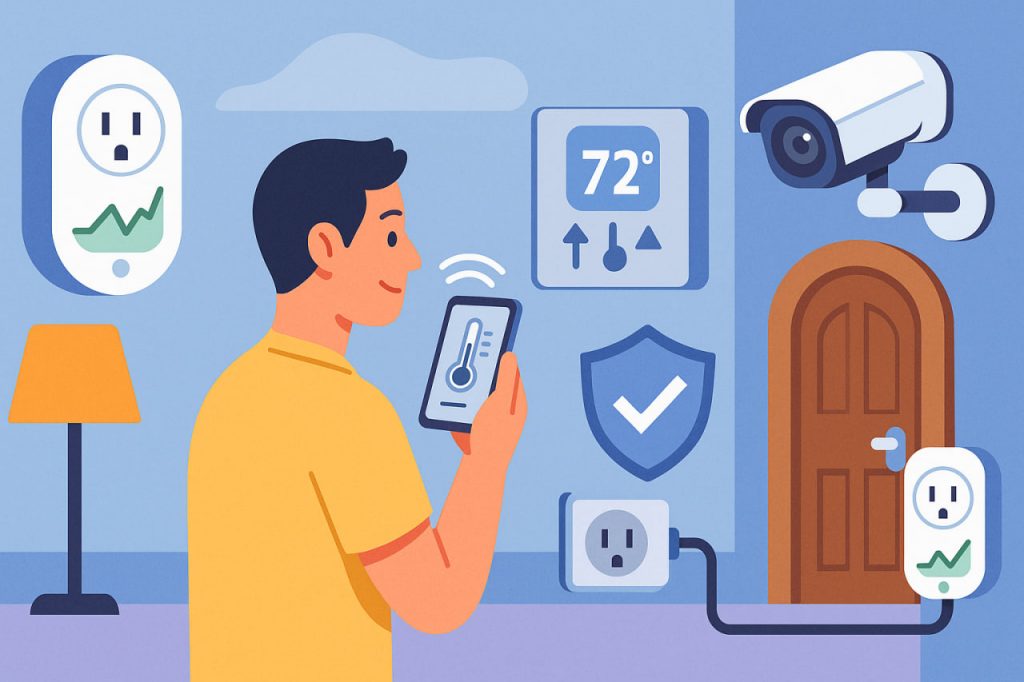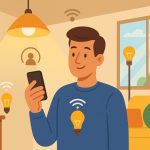The integration of smart home technologies is transforming how people manage energy use, protect their homes, and interact with appliances. Devices like smart plugs, thermostats, and security systems offer real-time control, automation, and energy monitoring. These tools contribute to lower utility bills, improved comfort, and enhanced home protection, making modern homes more responsive, efficient, and secure. As part of the broader Internet of Things (IoT), these devices are increasingly affordable and accessible to everyday users.
Smart Plugs: Control and Monitoring at the Outlet Level
Smart plugs, or smart outlets, are devices that sit between a wall socket and an appliance, enabling remote control via smartphone or voice assistant. They allow users to switch devices on or off from anywhere, set timers, and monitor energy consumption in real time. This is particularly useful for managing energy-hungry appliances like space heaters or air conditioners.
Some models also provide overload protection and automate power schedules based on user habits. Integration with smart home platforms such as Google Home or Amazon Alexa enables voice control and system-wide routines like turning off all devices at night or when leaving home.
Smart Thermostats: Climate Control and Energy Savings
Smart thermostats regulate heating, ventilation, and air conditioning (HVAC) systems more precisely than traditional units. These devices learn user behavior over time and adjust temperature settings automatically to balance comfort with energy efficiency. Many also use geofencing to detect when residents are home or away, modifying climate settings accordingly.
They can be controlled remotely via mobile apps and are compatible with sensors that measure room occupancy or sunlight levels. Advanced models provide usage analytics, helping homeowners identify cost-saving opportunities while maintaining a comfortable indoor climate.
Home Security and Automation
Smart security systems include cameras, door sensors, motion detectors, and smart locks, all of which can be monitored and managed remotely. Notifications are sent to the user’s phone in case of suspicious activity, and many systems allow for two-way communication through built-in microphones and speakers.
Integration with smart lighting and automation routines enhances protection—for example, lights can turn on automatically when motion is detected, or doors can lock when users leave the premises. These systems offer cloud storage, end-to-end encryption, and real-time alerts, increasing home safety and peace of mind.
Data Privacy and Interconnectivity
A common concern with smart home devices is data privacy. Because many devices transmit usage data over the internet, secure encryption and strong user authentication are critical. Most major brands now include multi-factor authentication and regular firmware updates to prevent vulnerabilities.
Interconnectivity is also key—devices that support protocols like Zigbee, Z-Wave, or Matter can communicate across platforms, enabling unified control from a central hub. This simplifies setup and allows for smarter automation across multiple devices.
Environmental and Financial Benefits
By reducing standby power waste and optimizing energy use, smart devices contribute to lower carbon emissions and sustainable living. For example, using smart thermostats can reduce heating and cooling costs by up to 20%, while smart outlets prevent phantom energy loss from idle electronics.
Government programs in many countries now offer rebates for installing certified smart thermostats or energy-saving systems, making them more affordable for consumers and encouraging broader adoption of green technologies in households.
Conclusion
Smart plugs, thermostats, and home security systems are key components of modern smart homes. They offer users greater control, comfort, and peace of mind while promoting energy efficiency and environmental sustainability. As technology advances and standards become more unified, these tools will continue to redefine how we interact with our living spaces.
Glossary
- Smart plug — a device that allows remote and automated control of power to connected appliances.
- Thermostat — a device for regulating indoor temperature automatically.
- Geofencing — a feature that uses smartphone location to trigger automation based on user proximity.
- HVAC — heating, ventilation, and air conditioning systems.
- Phantom energy — electricity consumed by devices in standby mode.
- Zigbee/Z-Wave/Matter — wireless communication protocols used in smart home ecosystems.
- Two-factor authentication — a security method requiring two types of verification to access a device or account.


